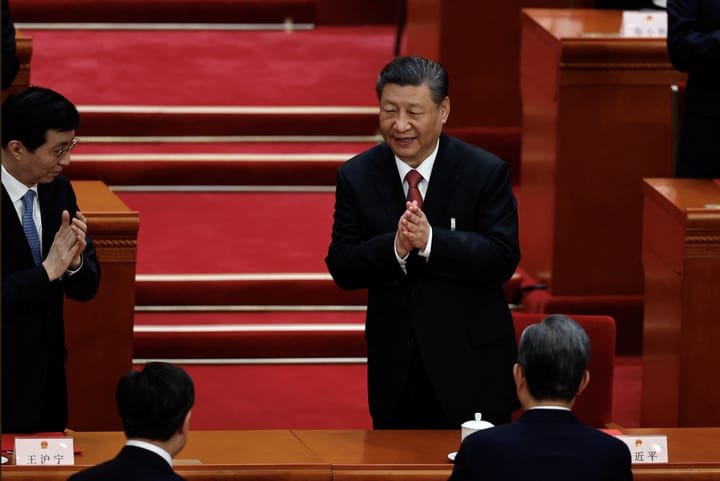Was President Trump’s Fourth of July speech authoritarian?

A few minutes every morning is all you need.
Stay up to date on the world's Headlines and Human Stories. It's fun, it's factual, it's fluff-free.
After President Trump’s speech at Mount Rushmore on July 3, the evening before Americans celebrated their Independence Day, many observers noted that the president seemingly went out of his way to emphasize the country’s widening social divisions during his remarks.
The New York Times and The Washington Post claimed that Trump used the occasion to lean on “culture wars” and exploit “social divisions,” while The Associated Press headlined its coverage of the event as one where the president pushed “racial division.”
Critics of these interpretations of the speech, including the editorial board of The Wall Street Journal (WSJ), suggested that these headlines cherry picked the president’s remarks and even misrepresented what he was saying.
“Contrary to the media reporting, the America Mr. Trump described is one of genuine racial equality and diversity. He highlighted the central ideal of the Declaration of Independence that ‘all men are created equal’,” argued the WSJ’s editorial team, adding that Trump cited Frederick Douglass and Martin Luther King Jr. as two examples in America’s “unstoppable march of freedom.”
“There was not a hint of racial division in his words except for those who want to distort their meaning for their own political purposes,” concluded the WSJ.
Others claimed that the centrality of the country’s polarizing disagreements in the speech was a clear departure from the way past presidents spoke on Independence Day, which is typically to find a unifying message.
Authoritarian messaging?
In a quote of the speech that was later tweeted by the official White House account, the president characterized the United States as a country besieged by internal enemies.
“Our Nation is witnessing a merciless campaign to wipe out our history, defame our heroes, erase our values & indoctrinate our children. Angry mobs are trying to tear down statues of our founders, deface our most sacred memorials & unleash a wave of violent crime in our cities,” Trump said.
According to Jonathan Haidt, a social psychologist at New York University, the remarks are a clear example of what behavioral economist Karen Stenner calls “The Authoritarian Dynamic,” especially insofar as it seeks to emphasize a “normative threat.”
In Stenner’s Authoritarian Dynamic, a normative threat is one where a leader characterizes certain groups of people or ideas as a fundamental risk to society. For Stenner, it is also central to how authoritarians gain and maintain power.
“Authoritarianism is a dimension that ranges from a strong preference for obedience and conformity to autonomy and diversity at the other end. So I call authoritarianism having a very strong preference for oneness and sameness,” Stenner wrote.
“Authoritarians have a very strong need to be part of a collective, to have everyone else in the collective along with themselves,” she added, stating that for authoritarians, “it’s not just about themselves, it’s about their demands for the behaviour of others—they desire to use the authority of the state and coercion to bring everyone’s behavior into conformity with the collective norm.”
Evidence in Trump’s speech that arguably fits this model include remarks that highlight his executive order to prosecute those that damage or destroy statues “to the fullest extent permitted under Federal law.”
“Make no mistake: this left-wing cultural revolution is designed to overthrow the American Revolution. In so doing, they would destroy the very civilization [America was founded on],” Trump said.
Us vs them
Although comparing Trump to authoritarians of the 20th century, like Hitler and Mao, are fraught topics – with critics often labeling any such comparisons inherently disingenuous – taking a look at some of the rhetoric employed by dictators can illuminate authoritarian tendencies.
No matter the underlying ideology, one of the most salient aspects of authoritarian speech is the centrality of “us vs them.” Authoritarians often portray themselves as fighters for the common people against a dangerous internal or external threat.
In a speech in Berlin in January 1940, Adolf Hitler emphasized how he fought off domestic enemies to gain power.
“Our answer is still the same one we gave our internal enemies of yore. You know, my old party comrades, that our victory in 1933 was not an easy one. It was an incredible struggle that was waged for almost 15 years; an almost futile struggle,” Hitler said.
In a piece of literature that expresses similar sentiments, the leader of China’s communist revolution and the first chairman of the Chinese Communist Party, Mao Zedong, wrote in 1939 that having enemies was a sign of progress.
“It is good if we are attacked by the enemy, since it proves that we have drawn a clear line of demarcation between the enemy and ourselves,” Mao wrote.
“It is still better if the enemy attacks us wildly and paints us as utterly black and without a single virtue; it demonstrates that we have not only drawn a clear line of demarcation between the enemy and ourselves but achieved a great deal in our work,” he added.
In his speech at Mount Rushmore, President Trump also spoke about America’s enemies, arguing that under his leadership the country would evolve into the kind of nation its detractors fear.
“This country will be everything that our citizens have hoped for, for so many years, and that our enemies fear — because we will never forget that American freedom exists for American greatness. And that’s what we have: American greatness,” Trump concluded.
It is unclear, however, if the enemies Trump was referring to are foreign or domestic.
Have a tip or story? Get in touch with our reporters at tips@themilsource.com




Comments ()